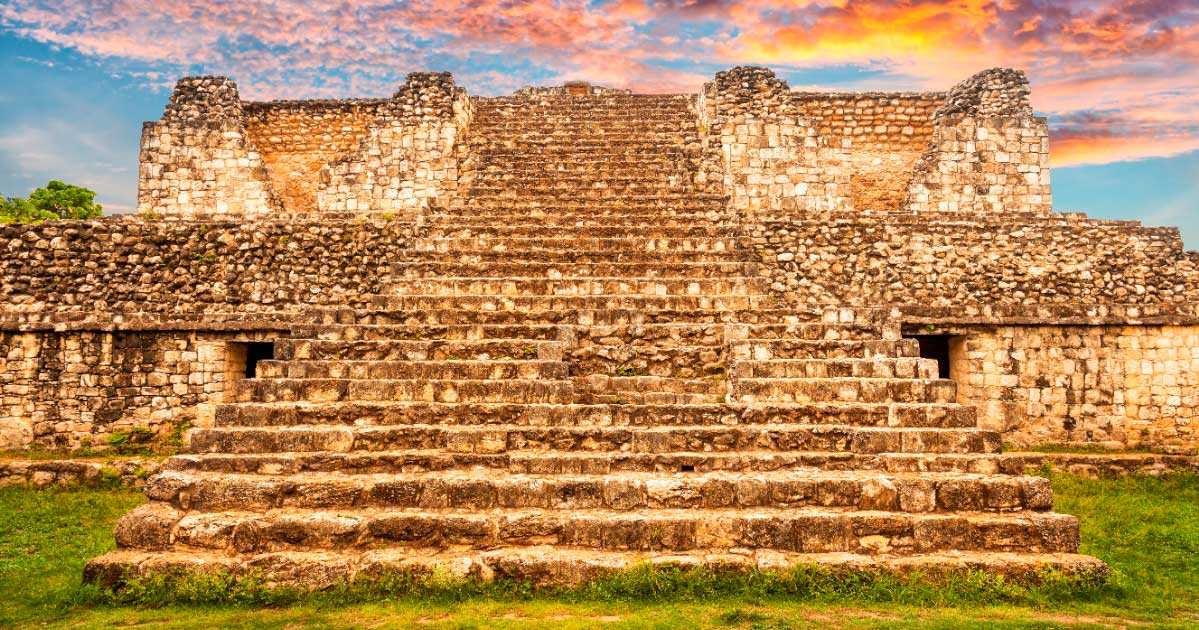Ek' Balam: Haunting Ruins of an Abandoned Maya Kingdom
One of the most fascinating archaeological sites in Central America is Ek’ Balam. Ek’ Balam is found in Temozón, Yucatán, Mexico in the Northern Maya lowlands, several miles northeast of Chichen Itza. Peaking in the 8th century AD, Ek’ Balam was once a Mayan kingdom and regional center of up to 20,000 people, spread over 7 miles (11.2 kilometers). The site was rediscovered in the late 19th century by Désiré Charnay, a French archaeologist; however, excavations did not begin until the 20th century, and only a fraction has been fully documented.
What makes Ek’ Balam so special, and what is it most known for? Why was the city abandoned? And what can we tell about the ancient civilization of Ek’ Balam based on the collection of artifacts they left behind?
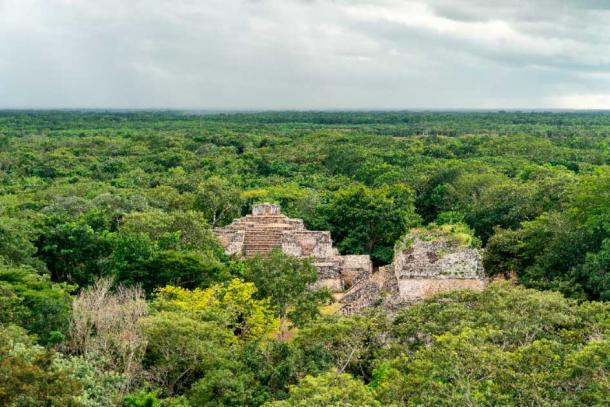
The ancient Mayan city of Ek’ Balam once covered 7 miles (11.2 kilometers), but only about 1 mile (1.6 kilometers) is cleared and open to the public. With an estimated past population of up to 20,000, many more discoveries await in future excavations. (skostep / Adobe Stock)
Ek’ Balam: Extensive Ruins of an Ancient City
Ek’ Balam, meaning ‘black jaguar’ or ‘sun jaguar’ in the Maya language, was not fully excavated until the late 20th century, well after Désiré Charnay’s death. Work on the site began in the 1980s and continued into the late 1990s, as archaeologists on the site continued to uncover ancient remnants of the long-lost civilization. It took several years for all of the artifacts to be identified and the North Maya hieroglyphic texts to be translated by experts in the field.
There are approximately forty five different structures that have been identified throughout the site. These structures include walls, temples, palaces, courts, tombs, and the main plaza. The main palace, called the Oval Palace, contained several burial relics. The structure of the palace, its location, and the presence of these relics all suggest that the palace was involved in cosmological ceremonies of some kind.
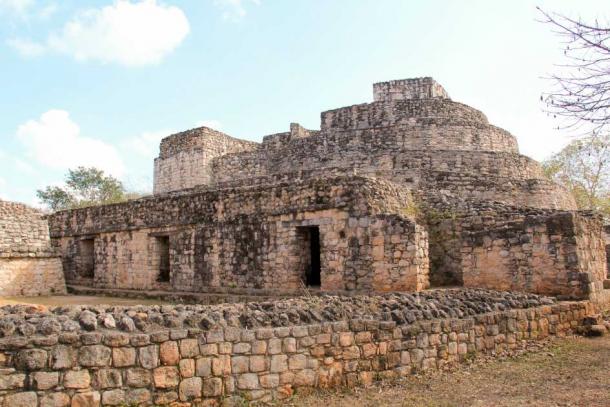
The Oval Palace at Ek’ Balam. There are several indications it may have been an observatory and/or ceremonial center. (Gildardo Sánchez / CC BY 2.0)
The largest structure identified in Ek’ Balam is the Acropolis. This structure is one of the most intriguing at the site because archaeologists discovered it contained the tomb of Ukit Kan Lek Tokʼ, one of Ek’ Balam’s ancient rulers. It was one of the last structures on the site that archaeologists excavated because it appeared to be only a large mound.
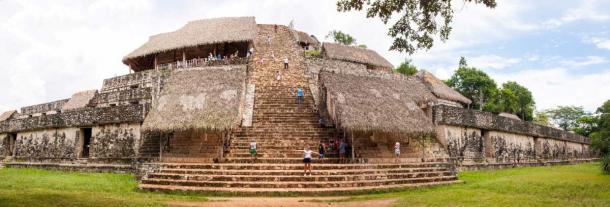
The Acropolis of Ek’ Balam in Yucatan, Mexico. The tiered structure leads up to El Trono (‘The Throne’). (Nikla / Adobe Stock)
Further analysis of the Acropolis revealed the temple in which Ukit Kan Lek Tokʼ was buried. The temple is nicknamed El Trono (‘The Throne’), and has an entrance shaped like the mouth of a jaguar.
- Astonishing Scale of Ancient Maya Metropolis Revealed by Laser Scans
- Maya Palace Emerges from Yucatan Jungle
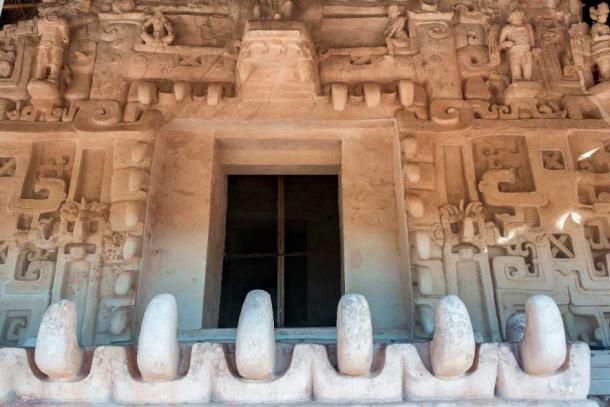
The entrance to the tomb of Ukit Kan Lek Tok’ is framed as a jaguar’s mouth, with sculpted teeth among other ornate figures (Jkraft5 / Adobe Stock)
Ek’ Balam’s Impressive Architecture: From Walls to Paintings
Other notable points in the excavation of Ek’ Balam include the site’s defensive walls, wall paintings, and overall structure. The entire site is surrounded by two curved defensive walls that served to protect the civilization from attack. Attempts to go around the walls would be futile, as the city was also surrounded by deep sinkholes that could not be passed.
The inner wall is carved and covered in plaster, shockingly well-preserved for its age. The outer wall is less decorative and was purely for defense purposes. Archeologists have identified this outer wall as the largest defensive wall in the Late Classic Yucatan. An additional inner wall made of rubble was discovered near the Great Plaza. Experts determined that this wall was likely a last-ditch attempt to protect the city from some sort of attack before the city was abandoned for safety purposes.
Archaeologists at the site discovered that many of the buildings were placed and designed in alignment with sacred and astrological structures. The site contains several roads which break off into the four cardinal directions in the center. These four roads suggest an intentional separation to represent the four-part cosmos of Mayan cosmology, which would have made these roads sacred.
Finally, archaeologists at the site discovered several wall paintings throughout the Acropolis. Many of these were northern Maya hieroglyphic texts that needed translation, while others were images requiring expert interpretation.
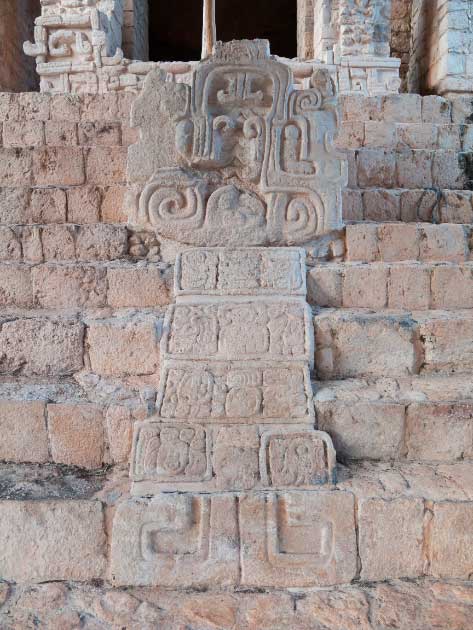
Head of serpent with Mayan writing, Ek' balam (Luis Miguel Bugallo Sánchez / CC BY SA 3.0)
One of the most famous paintings discovered inside the Acropolis was that of a deer being hunted, which experts believe is a mythological representation of the origin of death. Others appear to depict K’awiil, the famous Maya deity of lightning and maize.
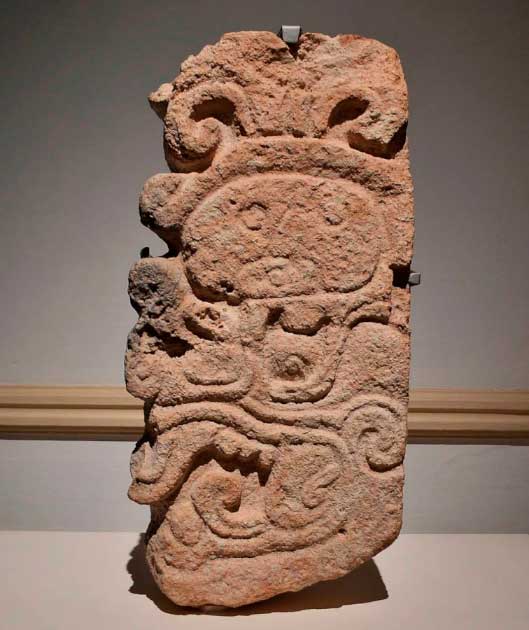
This representation of the celestial deity called K'awiil is related to abundance, fire and lightning. This piece was a decorative part of the Ek Balam Acropolis. (National Institute of Anthropology and History of Mexico / CC BY NC)
Interpreting the Site: Who Built Ek’ Balam?
Based on their discoveries, experts believe that Ek’ Balam was occupied between the Middle Preclassic and the Postclassic periods. From its origin during the Middle Preclassic to the Late Preclassic period, the city continued to expand and grow its population until it became a major city in its region. It grew so large by the Late Preclassic period that it became the capital of the region’s controlling polity.
Ukit Kan Leʼk Tokʼ, the most famous ruler of Ek’ Balam, ruled the city from approximately 770 to 802 AD. He is the primary ruler associated with Ek’ Balam, since he was the ruler during the city’s height between 700 and 840 AD. During his rule, Ek’ Balam was considered a major regional resource for surrounding cities. It was also around this time that Ek’ Balam became known for its pottery and architecture due to its ceramics production.
After 840 AD, the civilization at Ek’ Balam began to decline. The population started to decrease as families left for safety purposes. As previously mentioned, experts believe that the city was under attack from some sort of threat, which forced citizens out of the city. Between some families emigrating and others being killed by this unknown threat, the civilization of Ek’ Balam was soon dispersed entirely, leaving their beloved city abandoned.
The Challenge: Finding More Evidence
There is little other information about the civilization that was once at Ek’ Balam. A 16th-century text titled Relación Geográfica suggests that it was once part of a kingdom called Talol, which was founded by an individual named Coch Cal Balam from the east, and was later controlled by an aristocratic family called the Cupuls. However, this is the only text that mentions any of this.
Ek’ Balam is a fascinating archaeological site that provides some exciting insight into the civilization that once thrived there. Although more evidence is yet to be discovered about this site, experts continue to work to uncover texts and artifacts that may provide a deeper look at this now-abandoned ancient site.
Top image: One of two mirrored temples at Ek’ Balam called Los Gemelos (The Twins). Source: Jose Ignacio Soto / Adobe Stock
By Lex Leigh
References
Aimers, J. J. 2007. What Maya Collapse? Terminal Classic Variation in the Maya Lowlands. Journal of Archaeological Research, 15(4), 329–377. http://www.jstor.org/stable/41053243
Bey III, G. 2020. Ek’ Balam. Oxford Art Online. https://doi.org/10.1093/oao/9781884446054.013.2000000218
Bey, G. J., Bond, T. M., Ringle, W. M., Hanson, C. A., Houck, C. W., & Lope, C. P. 1998. The Ceramic Chronology of Ek Balam, Yucatan, Mexico. Ancient Mesoamerica, 9(1), 101–120. https://doi.org/10.1017/s0956536100001887
Coleman, D. n.d. Ek Balam Mayan Ruins on Mexico’s Yucatan Peninsula. Have Camera, Will Travel. Available at: https://archive.ph/20110817180513/http://havecamerawilltravel.com/ek-balam-mayan-ruins-mexico-yucatan-photos/
Dahlin, B. H. 2000. The Barricade and Abandonment of Chunchucmil: Implications for Northern Maya Warfare. Latin American Antiquity, 11(3), 283–298. https://doi.org/10.2307/972179
Why was Ek Balam abandoned? May 4, 2022. Action Tour Guide. Available at: https://actiontourguide.com/2022/05/04/why-was-ek-balam-abandoned
















